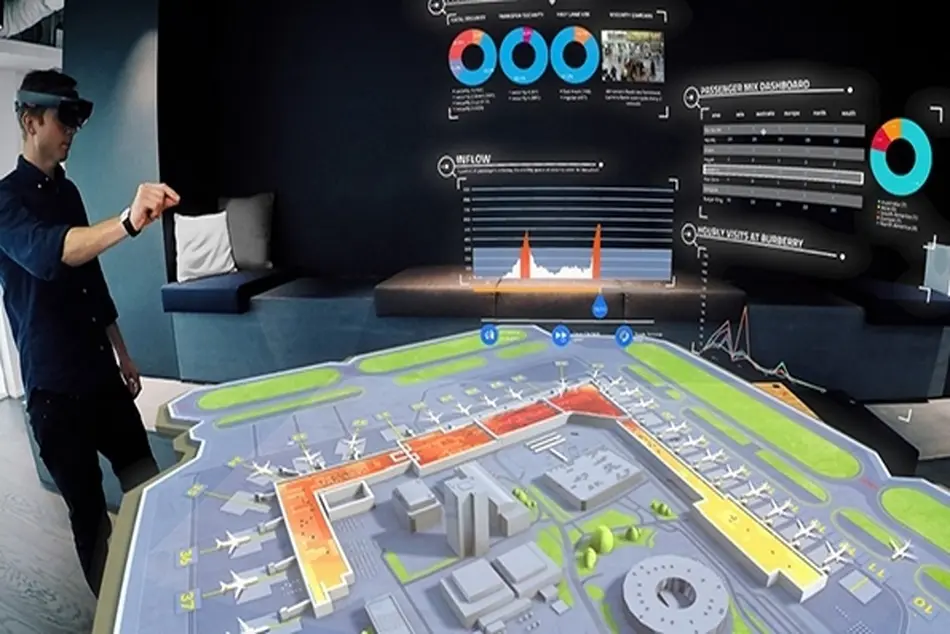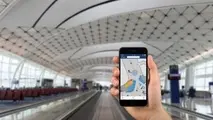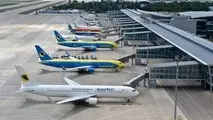SITA showcases multi-merchant payment platform, mixed reality

Global air transport IT specialist SITA has launched a secure payment solution using common-use platforms that will enable airlines and airports to maximize ancillary sales at every part of the airport journey.
Unveiled at SITA’s 2017 Air Transport IT Summit in Brussels this week, the system makes it possible for airlines to accept payments securely at multiple airports when using a shared IT infrastructure, and can be used with any departure control system. The SITA AirportConnect Common Use Payment Service will allow multiple airlines to share the same point of sale and PIN entry devices (PEDs) at the airport, while continuing to use their preferred payment service providers and banks.
It has been developed in response to a growing need for airlines to be able to accept payments at common-use check-in desks, kiosks and bag drop areas for baggage fees, upgrades and other ancillary charges. It also combines point-to-point encryption (P2PE) technology, with Europay, MasterCard, Visa and Payment Card Industry (PCI)-compliant chip card payment terminals, applications and processes, to allow multiple merchants to use the same terminal while meeting PCI security standards.
The payment terminals available as part of SITA’s service are capable of supporting PCI compliance requirements for an airline’s passenger credit card data handled through SITA’s CUTE/CUPPS/CUSS system. However, SITA stressed that PCI compliance certification still required an end-to-end security review by each airline of its own full payment process.
To date, SITA has implemented this service with an unidentified European airline at an unnamed common-use airport, where testing has proved the effectiveness of the encryption technology for chip, magnetic stripe and contactless card payment transactions. Initially available for SITA AirportConnect workstations, the service will be rolled out to support SITA’s common-use kiosks and bag drop stations over the coming months.
The Common Use Payment Service is the culmination of work with IATA’s Common Use Working Group, in collaboration with various payment industry partners including Verifone, Thales and Smart Technology Solutions.
SITA was also showcasing a number of other technology developments, including a mixed reality (as opposed to virtual reality) solution using Microsoft HoloLens for airport and airline application.
SITA worked with Helsinki Airport to conduct early research trials using HoloLens to reproduce the airport operational control center and analyze and manage airport operations in a mixed reality environment. The project interfaced with multiple data sources at Helsinki Airport to create a view of operations throughout the day. This included passenger real-time location and historic density data; aircraft position data; gate information; flight status information; security wait times and retail dwell times, segmented by passenger.
SITA CTO Jim Peters explained: “Mixed reality, which combines augmented and virtual reality, is more than a new interface. It enables digital and physical data to exist together. Our early research shows that there are potential uses for airlines and airports—for operations, maintenance and training. We need to learn how to interact in this new environment.”
HoloLens is a self-contained holographic computer, enabling users to engage with digital content and interact with holograms in the world around them. It runs Windows 10, and enables the blending of the physical and digital worlds in ways that were previously impossible.
Peters added: “Mixed reality hits a sweet spot of having an experience that is fully immersive for the user, but also keeps that person in the real world. The user can interact with both and avoids the disorientation or discomfort of fully immersive virtual reality.”
The key message from the summit was that aviation really needs to immerse itself in digital transformation or get left behind. There was a warning that disruptive technologies, potentially from startup businesses that do not even exist today, could fundamentally change air travel processes and patterns, usurping conventional “ownership” of the passenger. But in this new digital reality, cybersecurity becomes ever more critical in the face of current and emerging threats.


